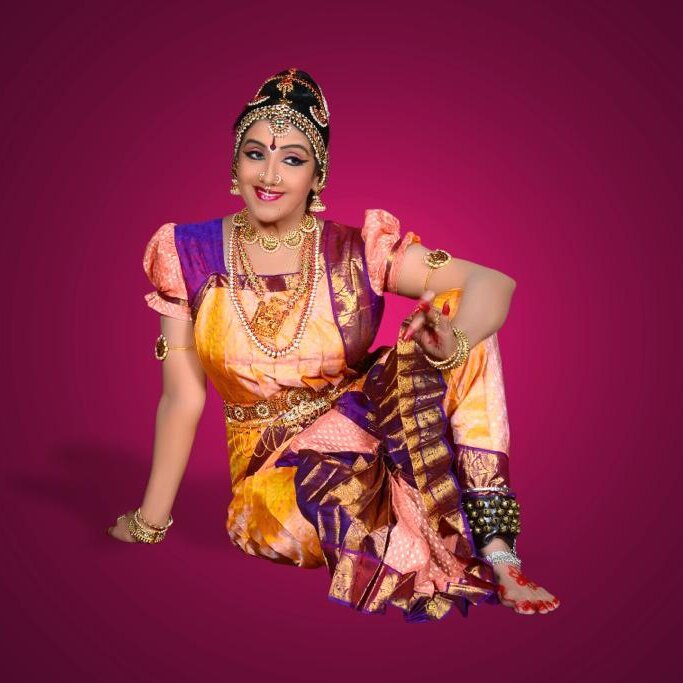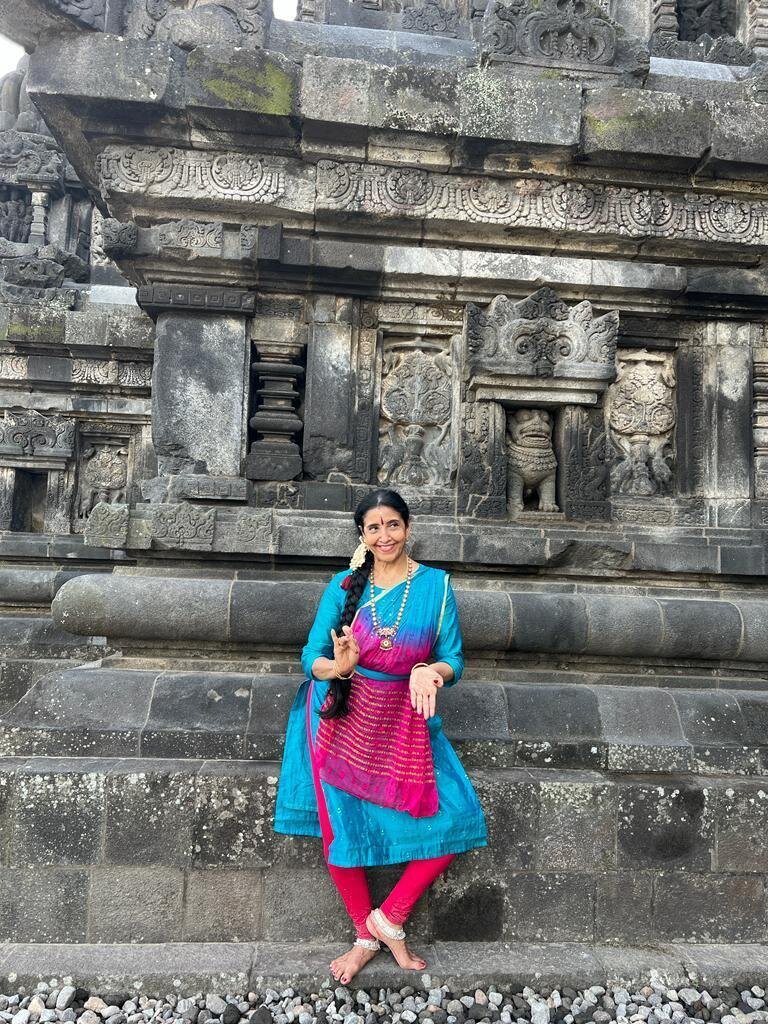Pushpanjali - Margam - Swagatham Krishna: Dance Workshop by Bala Devi Chandrashekar
by Bala Devi Chandrashekar
Workshop in Bharatanatyam classical dance by a renowned professor and researcher of this South India art form.

- Published
- May 2018
- Author
- Bala Devi Chandrashekar
‘The joy of teaching should equate the joy of learning’, profess the ancient Indian treatises on dance, and that notion is very palpable in this short video capture from Bala Devi Chandrashekar’s one 2018 workshop.
While the influence of Bharatanatyam dance form on Southeast Asian dances continue to be explored and debated, teachers and students of Khmer classical dance will note the striking differences in the rehearsal tempo and choreography: the rhythm is distinctively more marked, body motion is more athletic, more dramatic than in Khmer tradition. In both traditions, however, the teacher starts by indicating the beat to the young dancers, before joining in to show them movements, gestures, dance routine.
Watch BD Chandrashekar’s performance of Nandanar Charithram, 2017
Tags: dance, dancers, Bharatanatyam, teaching, Indian dance, Indian music
About the Author

Bala Devi Chandrashekar
Bala Devi Chandrashekar is a Bharatanatyam dancer and teacher, and a professor of practice in Asian Performing Arts based in the USA, with an iinterdisciplinary approach involving performing, lecturing, teaching and intense research.
Prof. Chandrashekar has performed (‘Padmavati An Avatar’ being her latest production) and held dance workshops and conferences in Hong Kong, Bali, London, UNESCO-Paris, Tokyo, The Hague, Cyprus, Mylapore, Chennai, Delhi, Thanjapur (Tamil Nadu, India; her birthplace), and numerous other venues — including on Broadway in September 2023. Other productions include “Brihadeesawara — form to formless”, staged at UNESCO headquarters in 2018, and Karna Destiny’s Child. So far, she has taught more than 5,000 students worldwide.
In Angkor Wat, July 2023 (photos courtesy of Ms. Bala Devi Chandrashekar)
An ardent practictioner of the 108 Karanas temple sculptures, she has identified these sculpted standard dance gestures in Prambanan and other temples on bas-reliefs ranging from the 9th to the 14th century, a study carried on for more than two decades in collaboration with renowned scholars in art history, music and associated subjects.
With her guru, Padma Subrahmanyam.





